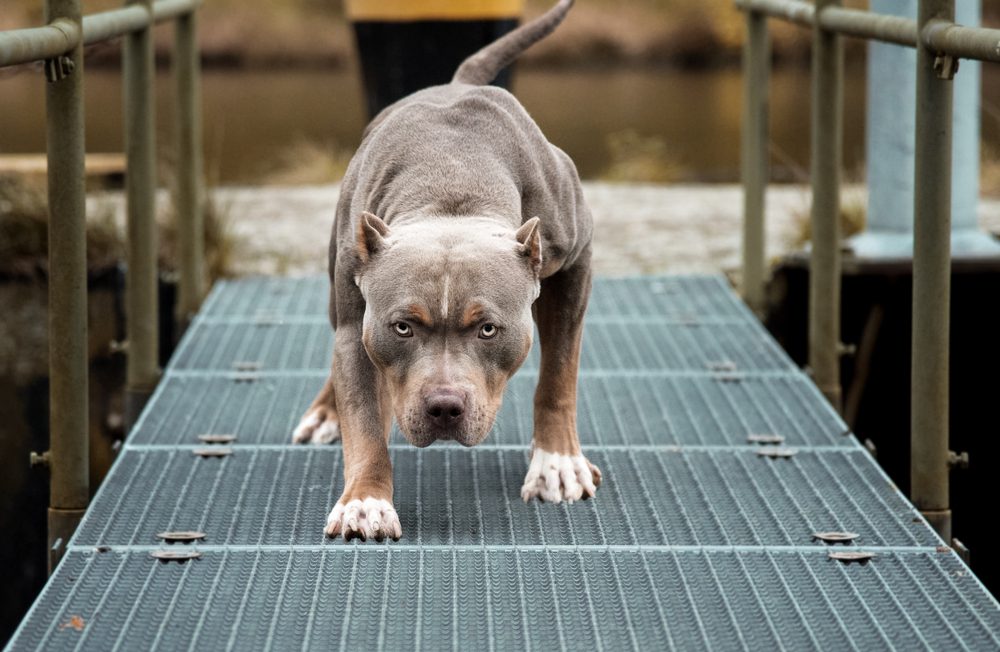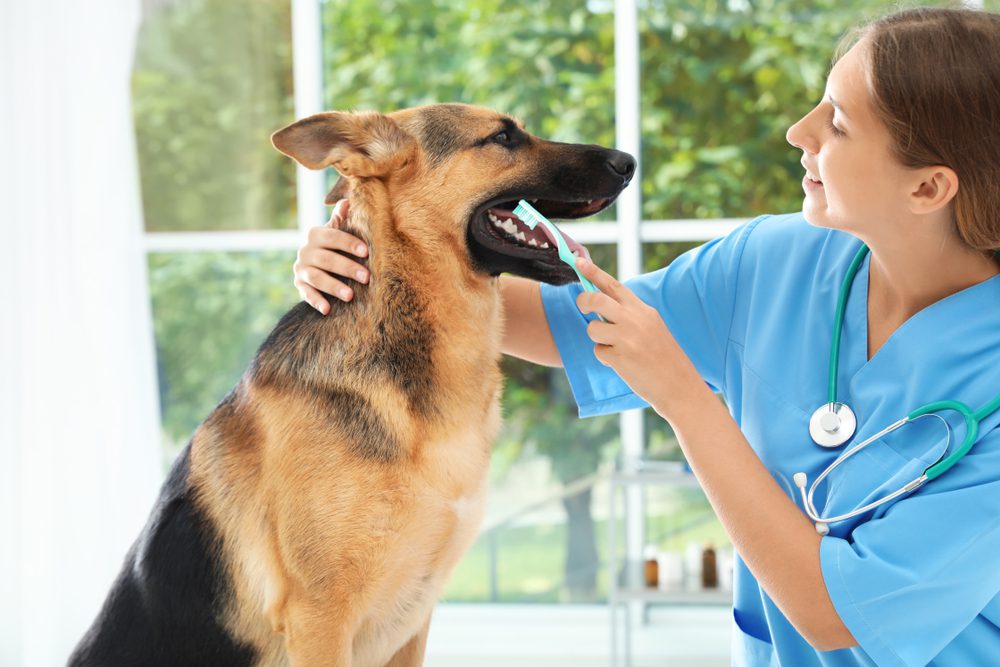How many of these dog myths do YOU believe?
There are many dog myths and lies out there about what our canines can and can’t handle when it comes to winter temperatures. We’ve all heard them at one time or another. You know, that old wives’ tale told to us by a well-meaning friend or family member.
You might have heard: “Just leave him in the yard. His coat can handle it”! You might have even heard the extreme statement: “Make sure your dog wears boots and a coat”! Even if they’re outside for only a few moments.”
Want to know if your dog’s sick? “Just check to see if his nose is dry!” Is he licking his wounds? “That’s good. It’ll help him heal faster!”
Now, we’ll admit that we might not know everything there is to know about dogs. But we want to help set the record straight and smash any dog myths out there.
While there may be some truth behind them, most are entirely false. Here are 6 of the most commonly used myths and misconceptions about our canine friends.

“When you meet a dog, let it sniff your hand first!”
This might be a well-intentioned line of thinking. But an eternalized dog myth, nevertheless. You should never stick your hand out toward any dog you’re about to meet for the first time. In our human relations, offering a fist bump or a handshake is second nature.
But let’s not forget that dogs aren’t humans. You behaving this way toward a dog can be misinterpreted as a sign of aggression by him, and he may bite you. The better approach is to calmly wait for the dog to come towards you if it’s interested.
After all, you don’t know anything about the pup’s obedience record. So if you want to greet a new dog, do it from the side and avoid making intense eye contact with him.
“Dogs only eat grass when they feel sick.”
This dog myth is only partially true. Let’s not forget that domestic dogs share genetics with wolves and wild dogs that wholly devour their prey, including stomach contents like berries and grass.
And for this very reason, many scientists insist that it’s entirely normal for a dog to eat a certain amount of grass every once in a while since it was once part of their regular diet. Some dogs may nibble on that lush green stuff out of boredom, while others simply like the taste.
Either way, you don’t have to worry if your fluffy friend snacks on your grass every now and again. But dogs DO periodically scarf down large amounts of grass if they’re feeling sick to their stomachs. This won’t be your typical grazing on grass.
Instead, a sick dog will chow down on a lot of grass, barely chewing the blades, and will usually vomit immediately afterward. If your dog does this often, booking a trip to the vet isn’t a bad idea.
“Bad dog breath is entirely normal.”
A dog having bad breath is so common that most folks just think it’s something every dog parent lives with. But we’re debunking this dog myth. The truth is that your dog’s breath shouldn’t be THAT bad.
And it would be best if you brushed your dog’s teeth more often than one might think. Your dog will obviously never have that minty-fresh breath. But it shouldn’t be insufferable either. Just like with humans, Having bad breath is an indicator of underlying health problems.
Notably, chronic bad breath is generated by bacteria in the mouth and is usually the first sign of some sort of dental infection.
Experts say that the biggest culprit of your dog having bad breath is periodontal disease, which affects up to 80% of dogs by the time they’re three years old.
Besides abscesses, tooth loss, and periodontal disease, bad oral hygiene can lead to life-threatening conditions like liver, kidney, and heart damage.

“Some breeds of dogs have locking jaws and unstoppable bite pressure.”
If we were to go by what people who are against that adorable pile of love, also known as a pit bull, you’d think they were killing machines from hell. The story goes that they have jaws that lock and bite pressure that lets them snap their way through anything, including steel!
Well, guess what? They don’t, and they can’t! This is one of the biggest dog myths out there. According to experts, pit bull-type dogs don’t have jaws different than any other breed of canine.
Furthermore, a 2012 study done by National Geographic set out to measure the bite pressure of dogs, other animals, and humans. The results may shock you!
On the bite meter, the pit bull breed registered 235 pounds per square inch, German Shepherds managed 238 psi, and Rottweilers struck 328 psi. That seems like an absurd amount of pressure, doesn’t it?
As we said, they also tested a few humans and found that our bite pressure can average anywhere between 150 and 200 psi.
And get this: Hyenas clocked in at 1,000 psi! But the official winner of the animal kingdom was the saltwater crocodile with a whopping 3,700 psi bite! Given that bit of scary information, the stories about Fido and his biting abilities are slightly exaggerated, right?
“Dogs Wag Their Tails When They’re Happy”
As we already know, canines communicate with us vocally and through their body language. This includes the signs they send out with those adorable wagging tails of theirs. The image of a dog wagging its tail has always been associated with joy.
But in fact, it’s a typical dog myth that ALL wagging tails are positive.
Scientists have been researching canine body language for many years, and they’ve figured out that there are some aspects of canine behavior that don’t necessarily conform with the shared knowledge of dog owners.
When it comes to tail wags, pups can show different emotions depending on the current situation, relying on the tail position and speed of its wagging. For instance, a tiny and gradual wag can be “considered an initial greeting.”
Based on the response from the other person or dog, it can change very quickly to a more general “let’s be pals” wag.
When it slows down, and the tail is held high with almost no wag, it’s saying, “I’m challenging you,” or down to between the legs with a quick wag, “I submit, we’re good.” So consider this dog myth debunked!

“A dog’s mouth is more sanitary than a human’s.”
This is one of the most common dog myths veterinarians have ever faced. If a puppy’s saliva were as antibacterial as the dog myth says, they’d be walking medical phenomenons!
We agree that dogs are heroes in their own right. But this is one dog myth we HAD to find out if it was true. Here are the results: While a dog’s saliva has a bit more alkaline pH, which can prevent some bacteria from breeding, it’s not exactly antibacterial.
In fact, one of the most standard causes of canine skin infections vets see is from when a dog licks an itchy spot or wound too much. But cleaning your dog’s teeth correctly improves their oral health and will prevent diseases from attacking your favorite fluff ball.
We recommend grabbing this toothpaste from Amazon to help you get the job done!
What are YOUR thoughts on all of these dog myths? Be sure to let us know in the comments. And if you found this article interesting, we also recommend reading: These 11 Fierce Guard Dogs Are Surprisingly Friendly











